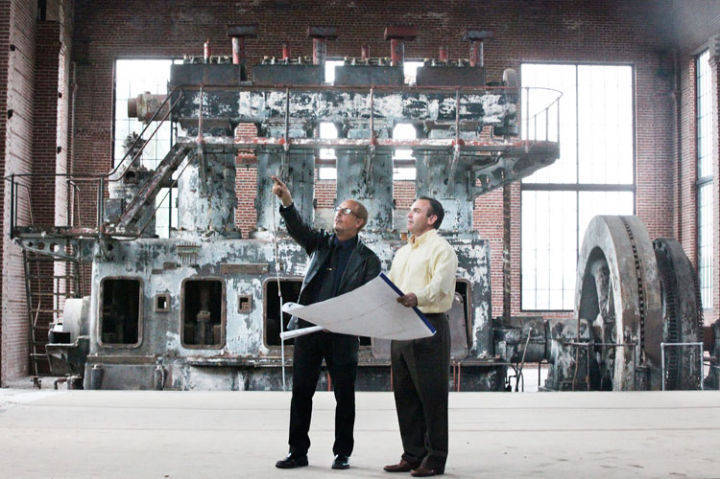
VERO BEACH — The City of Vero Beach has allowed some of the area’s most prominent builders to skip the rent payments they agreed to make on the old diesel power plant that sits empty alongside Route 60, at a loss to taxpayers of more than $50,000.
The failure to make any effort to collect four years of rent due under a lease signed in 2005 comes at a time when the city claims it is so strapped for cash it will have to increase fees for programs such Little League and using city parks for fundraising charitable events.
“Nothing has been paid?” Mayor Craig Fletcher said when asked about the building recently. “Now, you are getting my attention.”
The fact that the property has failed to ever attract a single tenant might also be seen as a cautionary tale for those currently urging Vero to spend more than $750,000 on altering the Twin Pairs as a sure-fire way to revitalize the old downtown.
Back a decade ago, there was a similar buzz about rehabbing the old power plant. At one point, the developer’s plans called for a bar to surround the remaining turbine in the 8,400-square-foot building, an outdoor café and possibly construction of a mezzanine for retail or nightclub space.
None of those things ever came to fruition.
The lengthy discussion of what to do about the 87-year-old brick building, which had been sitting empty and sliding further into decay for years, came to a head in 2001 when the city entered into a lease agreement with Phil Barth of Barth Construction and architect Charlie Block to allow them to renovate the property, find tenants and pay the city a nominal fee in exchange for their services.
The agreement, however, was not executed until late 2005. The city first eliminated lead and asbestos from the property at a cost of hundreds of thousands of dollars.
David Croom of Croom Construction subsequently joined the project, and Block, who ran into legal troubles, dropped out. It is not clear how involved Barth is at this point.
Croom said Sunday he would answer questions about the project Monday, but he never returned telephone calls. Barth also didn’t return a phone call.
After taking over the property, the partnership spent more than $1 million to repair the building’s brick work and replace windows with hurricane impact glass. It also removed metal out buildings from the property.
The 45-year lease the development group signed spelled out that no rent would be collected for first three years. The annual rent was then set at $10,490 for the first year, or $874.18 a month. The rent is currently $19,677 a year or $1,639 a month.// The city hasn’t collected at least $54,697 in rent due on the property.
Today, the old power plant is starting to show signs of neglect. Still empty, at least one of its massive windows will need to be replaced because it is cracked.
There is no mezzanine. There’s no plumbing and there’s not much of a floor. The plan was to repair the exterior of the building and market it before redoing the interior and adding parking and landscaping.
Realtor Billy Moss, the listing agent with Lambert Commercial Real Estate, said he gets several calls a week about the property. He declined to say how much Croom is asking for rent in today’s market, although some sources indicate the price is in the neighborhood $13,000 a month.
Although Moss won’t talk about specific deals, he’s effusive when he talks about the possibilities for the building.
“This will be the center of downtown.”
But what about the rent that is not being paid?
When asked why the city would not enforce a lease that clearly states it could retake possession of the property if the rent is not paid, City Manager Jim O’Connor said it came down to economics and pragmatism.
“If they cannot rent the space out, then, I’m pretty sure the city isn’t going to be a better landlord,” he said.
O’Connor said there were other considerations as well.
Croom is responsible for cutting the grass on the property and paying the utilities. Considering there isn’t any activity inside, the building’s electric bills typically are the bare minimum, $11.39 a month.
“They are still trying to market the building and they are still trying to get their million-dollar-investment out of it,” said O’Connor. “From my perspective . . . we haven’t had anyone come to us with a viable alternative.”
Brian Heady, a onetime city councilman, says that on the one hand he can understand where O’Connor is coming from.
“But I do think because (the developers) made a deal that maybe wasn’t in itself the best in the world, it doesn’t change your responsibility.”



